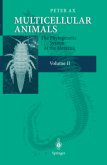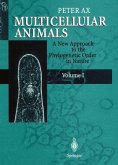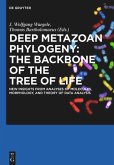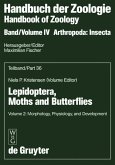The system of the multicellular animals presented here is an alternative to the traditional classification which still operates with the categories of Carl v. Linné, including typological divisions in artificial species groups. In a new approach to the phylogenetic order in nature this book strives for an objective systematisation of the Metazoa. It seeks a new path in the field of research and academic teaching based on the theory and methodology of phylogenetic systematics. This third volume covers the Metazoa from the Nemathelminthes to the Mammalia.
The turtle, toothless, soft bodied, enclosed in boney, shell, is primordial and invincible, slow and changeless. Locked into turtles of time and tradition, inertia and ignorance, darkness and fear, we cajole and pull, struggle and push until we learn that ideas set us free. Fairbanks, Alaska University Campus Sculpture LIz BIESOT 1985 The evolutionary order of organisms as a product of Nature and its repre sentation in a phylogenetic system as a construct of Man are two different things. The order in Nature consists of relationships between organisms. It is the result of an historic process that we call phylogenesis. When working with this order we must clearly differentiate between its identification and the subsequent description of what has been identified. When identifying the order we are placing ourselves in the framework of "hypothetical realism" (Vol. 1, p. 11); it is principally impossible to de termine how well or how poorly the real world and our cognitive appara tus match. For phylogenetics as an historicaUy directed discipline, how ever, the following limitation is more relevant. We cannot demonstrate ex perimentally wh ether or not that which we have interpreted from the prod ucts of phylogenesis corresponds to facts of (hypothetical) reality.
The turtle, toothless, soft bodied, enclosed in boney, shell, is primordial and invincible, slow and changeless. Locked into turtles of time and tradition, inertia and ignorance, darkness and fear, we cajole and pull, struggle and push until we learn that ideas set us free. Fairbanks, Alaska University Campus Sculpture LIz BIESOT 1985 The evolutionary order of organisms as a product of Nature and its repre sentation in a phylogenetic system as a construct of Man are two different things. The order in Nature consists of relationships between organisms. It is the result of an historic process that we call phylogenesis. When working with this order we must clearly differentiate between its identification and the subsequent description of what has been identified. When identifying the order we are placing ourselves in the framework of "hypothetical realism" (Vol. 1, p. 11); it is principally impossible to de termine how well or how poorly the real world and our cognitive appara tus match. For phylogenetics as an historicaUy directed discipline, how ever, the following limitation is more relevant. We cannot demonstrate ex perimentally wh ether or not that which we have interpreted from the prod ucts of phylogenesis corresponds to facts of (hypothetical) reality.








